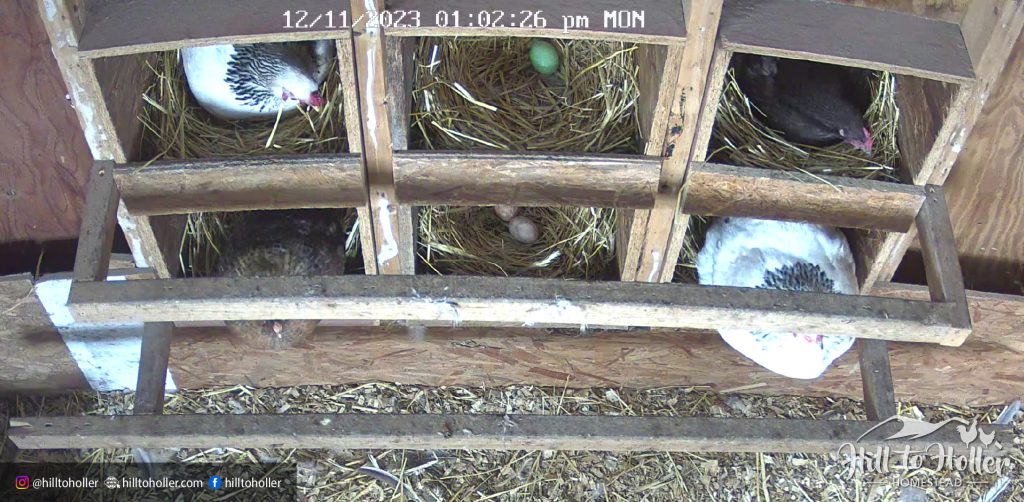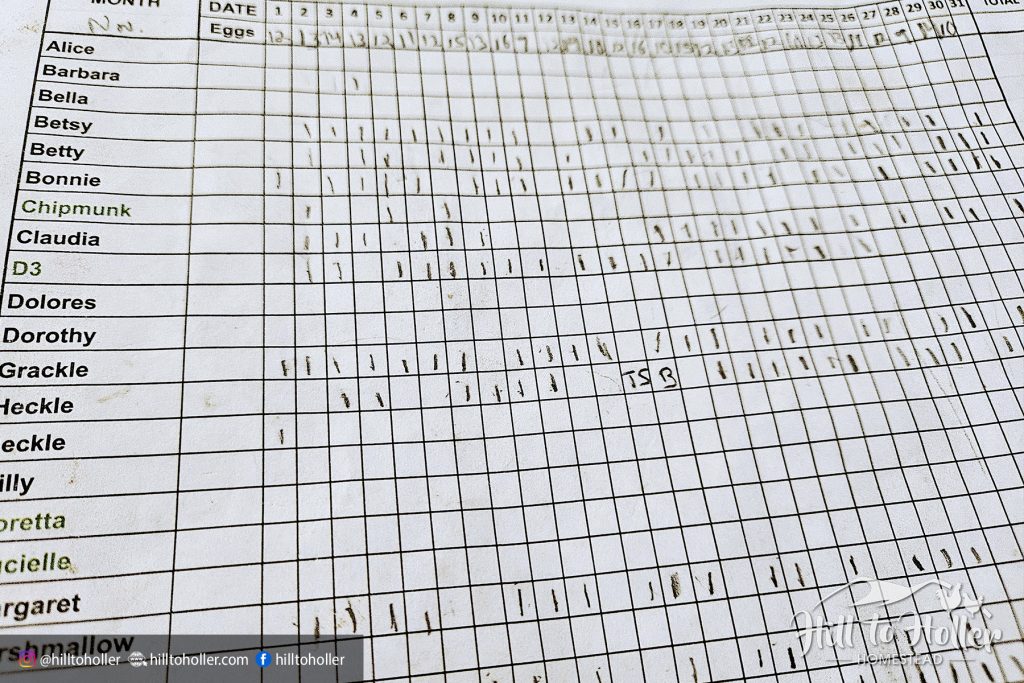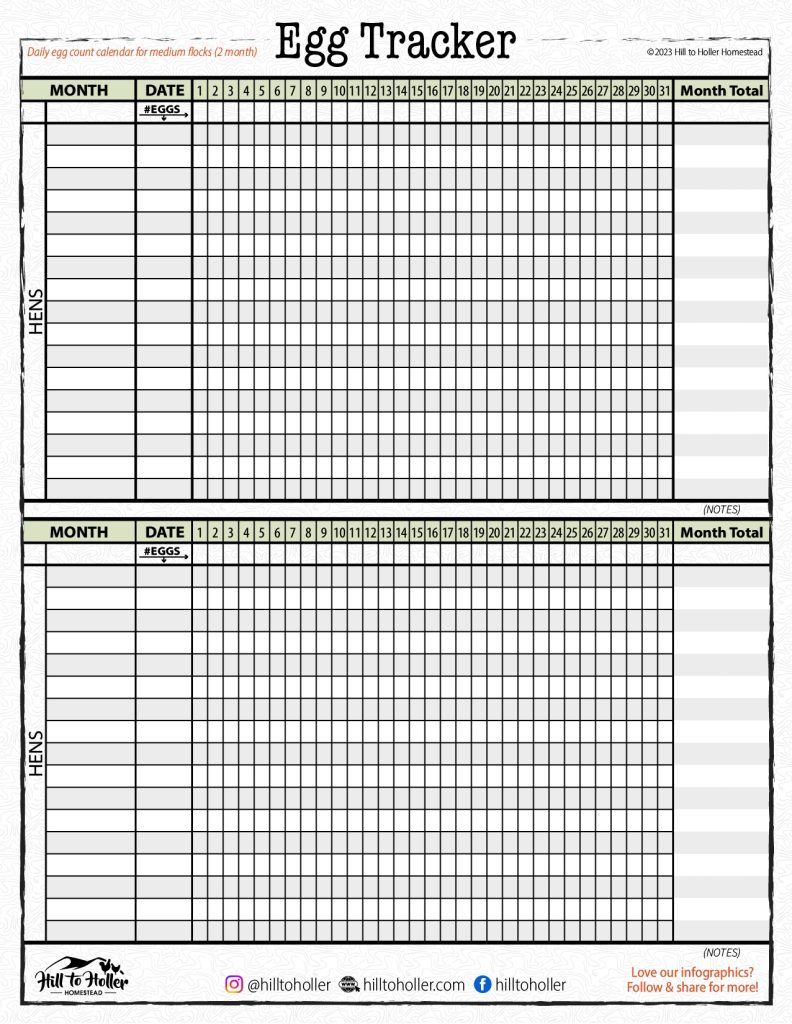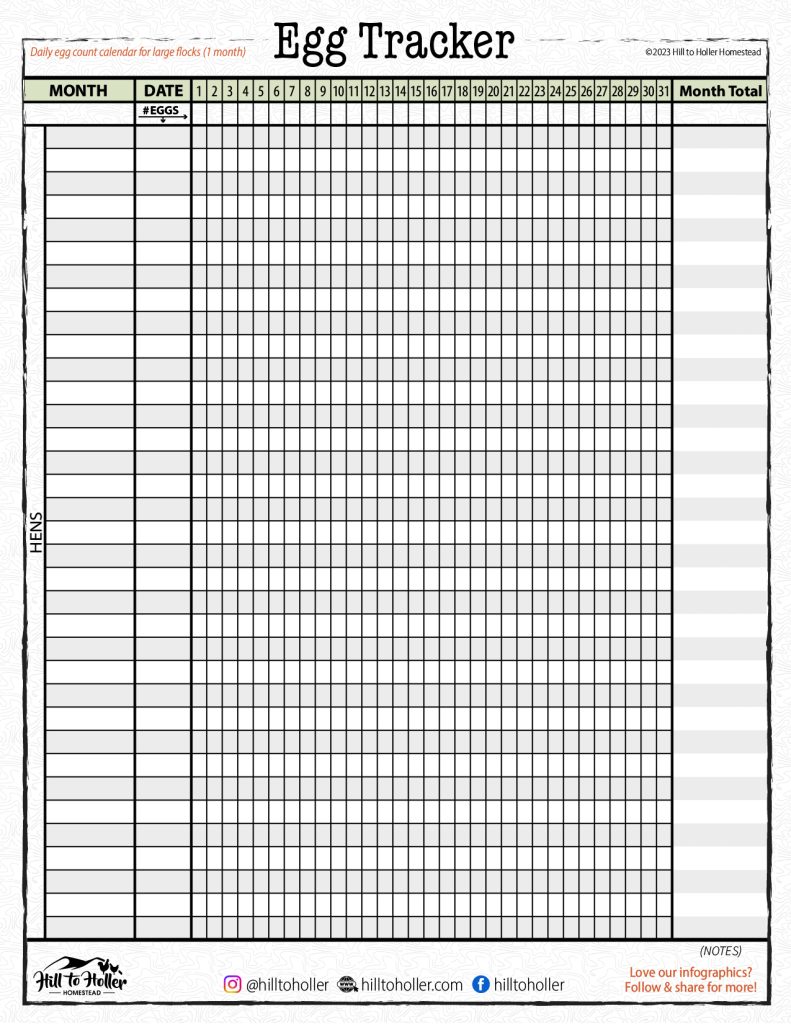Egg Tracking Calendar
Do you keep track of how many eggs your hens lay? Or even more specifically, which hen lays on which day? If you do, or if you want to start, and would like an easy-to-use system, here’s a look at what we do (and some useful printable fill-in charts to help you get started!)
Here are a few reasons why you may be interested in tracking your hens’ production as well.
- It can give an early warning if a hen is ill or being bullied. A hen who is normally super production but suddenly drastically drops or completely halts egg production can be cause for concern. If we notice that one of our girls has changes in her normal egg-laying schedule, we will investigate the cause to make sure that she’s healthy and happy.
- Environmental changes can be quantified. Hens can be affected by changes in their environment, such as: weather, temperature, adding new members to the flock, losing or removing flock members, modifications to the coop, changes in the pecking order, and more. By tracking egg production and making note of any environmental changes, it’s easy to see any correlation between them.
- Definitive results from different feeds. Feed nutrition varies and can affect a hen’s health, and her egg laying rate. We have experienced this firsthand- a sudden and drastic decline in egg production after switching the girls to a bargain feed, that resolved itself within days after switching back.
- Breeding for specific traits. When selectively breeding for desired genetic traits, it’s necessary to know which hen’s eggs to hatch. Even hens of the same breed can exhibit various characteristics that may or may not be desirable to keep in the bloodline.
- Each hen’s productivity is monitored. Not all hens will lay the same amount of eggs per year, but most of them will lay most frequently in the summer months and then slow down or stop completely during the fall and winter, or when they molt. By tracking egg production, we can easily see who is just taking a winter break, and who has freeloading tendencies.
- It’s fun! We just like to see who’s laying what, and will jokingly call our most productive girl “Employee of the Month”.
We’ve found that using a spreadsheet is the easiest and most efficient way to keep track of egg laying. Some people use an app, which we have tried, but for us, a time-tested pencil and paper works best.
For the most part, we can tell the eggs apart by color, shape, and size, but when we first started tracking egg production, the coop cam was an invaluable tool to help learn which egg was laid by which hen. It’s especially important when there are multiple hens of the same breed, laying very similar eggs. The nuances between them will become more noticeable over time, as one’s eye becomes more trained to seeing the small differences between each egg, but even now, we still verify by referencing our coop cam.


Below are some downloadable and printable egg tracking spreadsheets to help you get started. Click the image to open a high-resolution version to save to your computer.
In the first column, just fill in the current month, and each hen’s name. The days of the month are in the first row across, and can be marked with a check in the subsequent rows for each hen on the day that she lays. The second column gets filled in at the end of the month, to tally up each hen’s total. The last column holds the flock’s monthly egg total, and has room for notes such as weather, feed changes, flock disruptions such as predators, molting, or other events that may affect egg production.
We use the single-month large flock sheet in the spring and summer, when the girls are laying very regularly and frequently. In the winter months, when the girls are molting and taking a break, we switch to the smaller, medium-sized flock sheet to conserve paper. Feel free to try them all and use whichever one works best for you.
Click here to check out our other infographics & informational resources .



